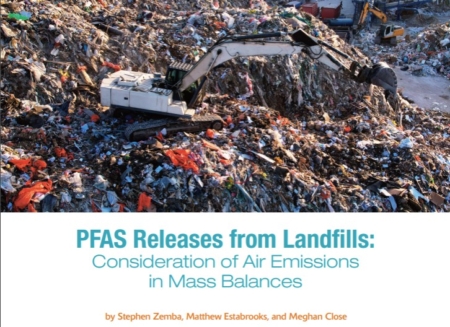The May 2024 updates to the EPA’s Regional Screening Levels (RSLs) include much more protective toxicity values for perfluorooctanoic acid (PFOA) and perflurooctanesulfonic acid (PFOS) and their related salts.
Changes to key values are summarized in the table below. More protective values are reflected by decreases in non-cancer reference doses and increases in cancer potency slope factors due to their respective usage in risk equations. Reference doses have decreased by factors of 100 and 20, respectively, for PFOA and PFOS. Changes for the cancer potency slope factors are even more substantial. EPA has provided a cancer potency for PFOS for the first time, and the cancer potency for PFOA has increased by a factor of 420,000.
| PFAS | Non-Cancer Reference Dose | Cancer Potency Slope Factor | ||||
| Previous Value (ng/kg-d) | May 2024 Update (ng/kg-d) | Factor Decreased | Previous Value (d-kg/mg) | May 2024 Update (d/kg-mg) | Factor Increased | |
| PFOA | 3 | 0.03 | 100 | 0.07 | 29,300 | 420,000 |
| PFOS | 2 | 0.1 | 20 | – | 39.5 | – |
The toxicity value updates have significant implications for health risk assessment. At EPA’s Maximum Contaminant Level of 4 ng/L for PFOA, the estimated incremental cancer risk for a 70 kg adult drinking two liters of water per day for 30 years is 0.0014, or 1,400 per million – 14 times greater than the upper end of the target risk levels for Superfund sites. The non-cancer hazard quotient for these same assumptions is 3.8, which exceeds the target limit of 1. Given that the cancer risk estimate exceeds its target level by a greater factor, the new toxicity values for PFOA indicate a shift in importance from non-cancer health effects to cancer risk.
The source of the new toxicity values is from work at the EPA’s Office of Water (PFOA and PFOS), and the values have not gone through the Integrated Risk Information System (IRIS) process. EPA points out that the values have been subject to review and comment by its Science Advisory Board and public comment in conjunction with the development of the PFAS Maximum Contaminant Levels, but the degree of peer review of the toxicity values is unclear, especially for the PFOA cancer potency slope factor. The new groundwater RSL for PFOA is 0.0027 ng/L based on a 1 per million incremental cancer risk, and this value of 0.0027 ng/L is considerably lower than the MCL of 4 ng/L, which is based on an analytical reporting limit for Method 537.1 and was set to provide the lowest practically measurable threshold based on EPA’s interpretation of PFAS as potentially carcinogenic. The new RSL value underscores the importance of EPA’s setting the MCL goal of zero for PFOA and PFOS. Many laboratories are capable of detecting PFOA at levels even lower than the 4 ng/L MCL, and detections exceeding 0.27 ng/L in drinking water correspond to cancer risks greater than 100 per million according to EPA’s estimates.
Except for the cancer potency for PFOA, the revised toxicity values are derived from human epidemiological studies (as opposed to laboratory animal studies). As pointed out by EPA, laboratory animal studies are potentially of less relevance to humans due to interspecies differences in responses to PFAS exposure. Also, the epidemiological studies relied on by EPA typically examine exposure levels relevant to the general U.S. population. However, epidemiological studies are also difficult to conduct and interpret, as they reflect statistical associations, and not necessarily causal relationships, and are subject to considerable uncertainties (such as confounding factors).
Another subtle but important change in EPA’s May 2024 updates to its RSL tables involves dermal exposure to PFOA. EPA added a dermal permeability constant, and hence now calculates a risk to PFOA from activities such as showering that involve dermal contact with domestic water. As a consequence, elimination of drinking water exposure through the supply of bottled water may not be sufficient to mitigate risks from continued use of domestic water for purposes other than drinking water, especially in light of changes to toxicity data. A concentration of 1.5 ng/L of PFOA in water corresponds to a 1 in a million incremental cancer risk based on dermal exposure, per EPA’s latest RSL estimates, and a 150 ng/L concentration corresponds to a 100 in a million incremental cancer risk, per the exposure assumptions and toxicity values embedded in EPA’s RSLs.
Posted In: Articles
Tagged In: Industrial, PFAS, Research, USEPA





